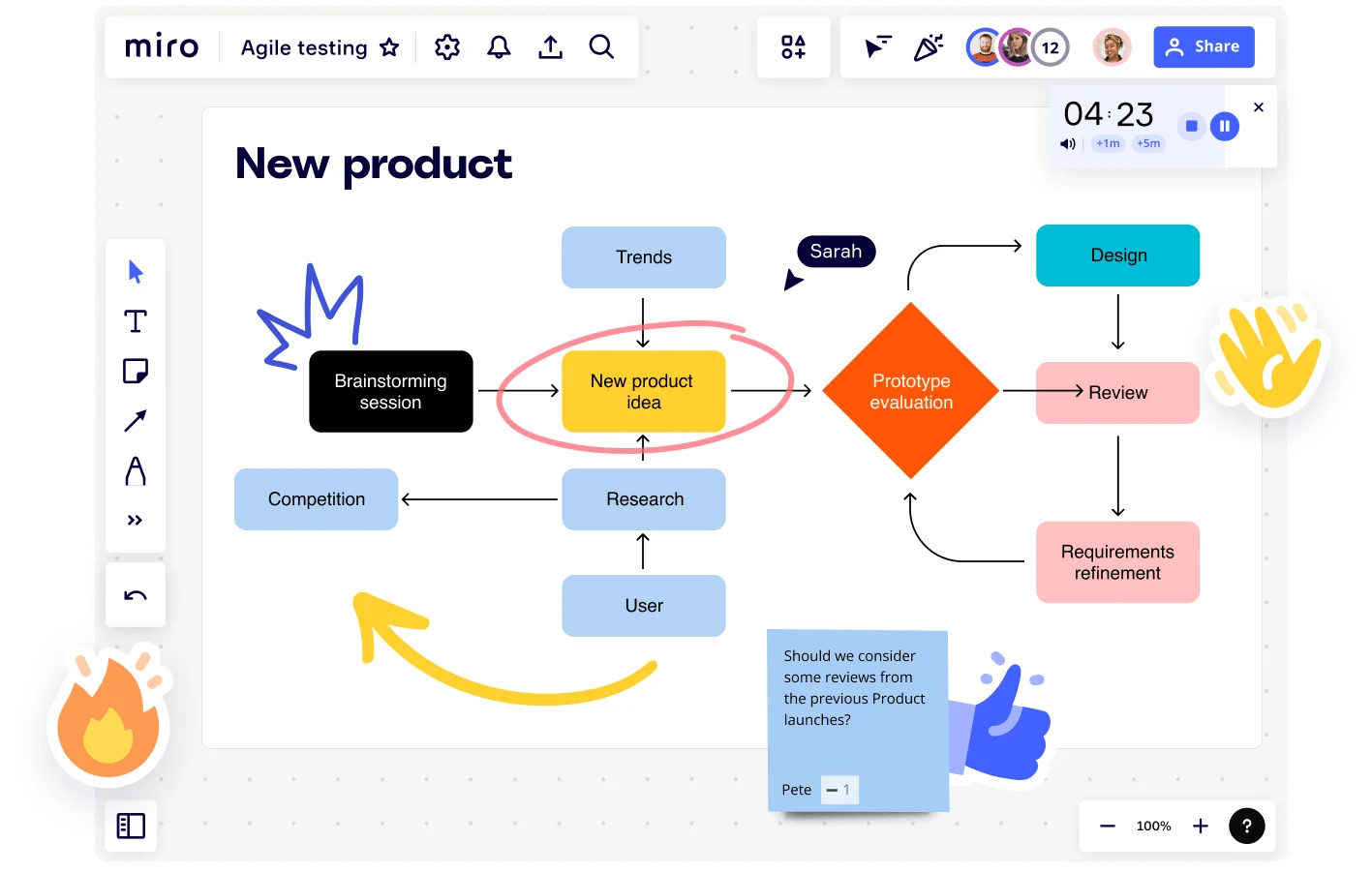
Lean Methodology vs. Agile

Comparing Lean Methodology vs Agile
Effective project management methodologies play a crucial role in ensuring success. Two popular approaches, lean methodology and agile, have gained significant traction in various industries.
This article aims to provide a thorough and expert analysis of the key differences between lean methodology and agile, assisting professionals and businesses in making informed decisions regarding their project management strategies.
An Overview of Lean and Agile
Before diving into the comparison, it is essential to understand the fundamental concepts of lean methodology and agile. Both methodologies offer unique perspectives on project management, optimizing workflows, and delivering value to customers. In this section, we will explore lean methodology and agile individually, unraveling their core principles, values, and benefits.
Lean Methodology
Lean methodology, derived from the Toyota Production System, is a customer-centric approach that prioritizes efficiency, waste reduction, and continuous improvement.
By eliminating non-value-added activities, lean methodology aims to streamline processes and optimize resource utilization. This approach emphasizes delivering value to customers while minimizing waste across the entire value stream.
Agile practices
Agile, originally developed for software development, has evolved into a broader framework applicable to various industries. Agile focuses on adaptability, collaboration, and iterative development.
Through short iterations called sprints, agile enables teams to respond quickly to changing requirements, gather feedback, and continuously enhance the product or service being developed. It encourages close collaboration among team members and stakeholders, fostering a dynamic and customer-centric approach.
Comparing Lean Methodology and Agile
Now that we have a solid understanding of lean methodology and agile individually, let's delve into a comprehensive comparison between these two prominent project management approaches. By exploring their similarities and differences, we can gain insights into the contexts where each methodology thrives and make informed decisions when choosing the right approach.
Key Principles and Approach
Lean methodology places a strong emphasis on waste reduction, aiming to eliminate activities that do not add value to the customer. By leveraging concepts such as value stream mapping and process optimization, lean methodology seeks to create streamlined workflows that maximize efficiency and customer satisfaction. It encourages a culture of continuous improvement and empowers cross-functional teams to drive change.
Agile embraces change and unpredictability, promoting flexibility and adaptability in project management. Its core principles, such as iterative development and continuous feedback, allow teams to respond to evolving requirements effectively.
Agile methodologies like Scrum and Kanban provide frameworks for organizing work, promoting transparency, and encouraging collaboration among team members. Agile's iterative nature enables incremental delivery of high-value features and facilitates early stakeholder involvement.
Team Structure and Roles
In lean methodology, teams are typically structured around value streams or specific processes. Cross-functional teams collaborate closely to ensure smooth flow and value creation. Roles are often flexible, allowing team members to take on multiple responsibilities and actively contribute to process improvement.
Agile emphasizes self-organizing teams that are empowered to make decisions and deliver results. Roles such as Scrum Master, Product Owner, and Development Team members ensure effective collaboration and accountability.
The focus is on fostering a culture of trust, collaboration, and shared ownership, enabling the team to adapt and deliver high-quality outcomes.
Project Planning and Execution
Lean methodology advocates for a pull-based approach, where work is initiated based on customer demand. Kanban boards and other visual management tools are utilized to track progress and optimize workflow. Lean methodology emphasizes the elimination of bottlenecks and the reduction of lead times to enhance overall productivity.
Agile project planning revolves around iterative development cycles known as sprints. The team collaboratively plans and prioritizes work using techniques like user stories and backlog refinement.
Agile frameworks like Scrum provide ceremonies such as sprint planning, daily stand-ups, and sprint reviews to ensure transparency and effective execution. The focus is on delivering small, incremental value throughout the project duration.
Choosing the right approach: Lean or Agile?
Selecting the most appropriate project management approach requires careful consideration of various factors, including the project type, scope, and organizational culture. Here are factors to consider:
Project Type and Scope
The choice between lean methodology and agile depends on the nature and scope of the project.
Lean methodology suits well-defined processes with a focus on efficiency, making it ideal for manufacturing and process-oriented industries.
Agile, on the other hand, thrives in dynamic and uncertain environments, making it suitable for software development, creative projects, and projects with evolving requirements.
Organizational Culture
The compatibility of lean methodology or agile with an organization's culture is a critical consideration. Lean methodology requires a commitment to continuous improvement and a willingness to challenge the status quo.
Agile necessitates a culture of collaboration, flexibility, and trust, enabling teams to adapt and respond to change. Understanding the existing organizational culture is vital in selecting the approach that aligns best with the values and capabilities of the organization.
Combining Lean Methodology and Agile
Rather than viewing lean methodology and agile as mutually exclusive, organizations can explore their synergies and integrate elements from both approaches. For example, incorporating lean principles within agile frameworks can enhance process efficiency and waste reduction.
By combining the strengths of both methodologies, organizations can create a tailored approach that addresses their unique needs with the right tools for agile or lean in order to optimize project outcomes.
Conclusion: Choosing the Right Approach
Lean methodology and agile offer distinct yet valuable approaches to project management. Understanding their key principles, differences, and areas of overlap enables professionals and businesses to make informed decisions.
Whether choosing a lean methodology for efficiency-driven processes or embracing agile for adaptability and collaboration, organizations can leverage these methodologies to achieve better project outcomes and drive continuous improvement in today's dynamic business landscape.